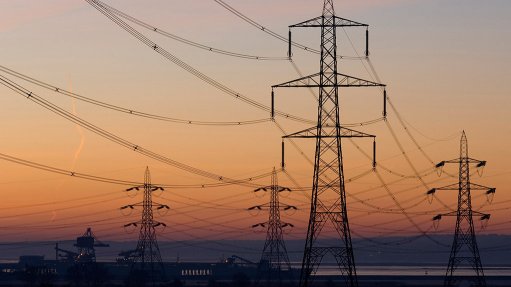
For South Africa to be energy secure by 2032, it needs to bring 53 GW of electricity into the energy system, which, in turn, requires 14 000 km of new transmission lines to be built in a decade.
The current transmission building capacity, however, is about 400 km/y, Stellenbosch University Centre for Sustainability Transitions junior researcher Alboricah Rathupetsane pointed out this week.
In a presentation at the Trade & Industrial Policy Strategies’ (TIPS’s) yearly forum on August 1, she estimated that the transmission infrastructure required to cater for the 53 GW of additional electricity capacity would cost about R235-billion.
Rathupetsane added that transmission projects took about seven years from inception to commissioning to release, which means the majority of structure builds will only happen in the last five years of the decade and on towards 2032.
Responding to the question about what it would take to realise this transmission expansion, she listed the main issues as being access to sufficient capital, planning and permitting hurdles, procurement of materials being inadequate and qualified workforce availability.
These issues are exacerbated by Eskom’s significant debt burden that results in difficulty attracting capital to finance scaled-up grid upgrades, as well as land rights taking a long time to be permitted and acquired.
Moreover, Rathupetsane explained the current procurement system was not set up for acquiring the amount of materials needed for rapid transmission grid expansion, such as copper and transformers.
She elaborated that national procurement laws that require local sourcing currently limit the ability to scale.
Moreover, she said South African contractors that could execute transmission line build programmes were currently not set up for the scale and speed of the build-out required and needed additional qualified personnel and equipment.
On another note, these big projects required that contractors give performance guarantees up to 20% of the project cost, which Rathupetsane said many companies in South Africa did not have the balance sheets for.
To this end, she suggested the assistance of development banks to provide guarantee facilities for engineering, procurement and construction contractors to take on projects, lest international contractors were chosen to do the work and took up the jobs offered by grid expansion.
Rathupetsane said the grid had become the nexus and meeting point for a number of actors including government and industry, but a strategy lacked to scale up smaller companies to carry out more of this grid expansion process.
She mentioned that the draft South African Renewable Energy Masterplan had been published, but questioned what a strategic industrial plan would look like for grid expansion, as a lot of complexity was involved.
“There should be some kind of strategy put in place to properly harness this opportunity for the local economy,” she concluded.